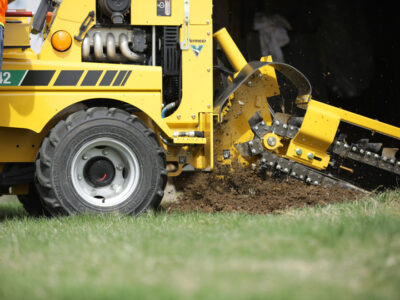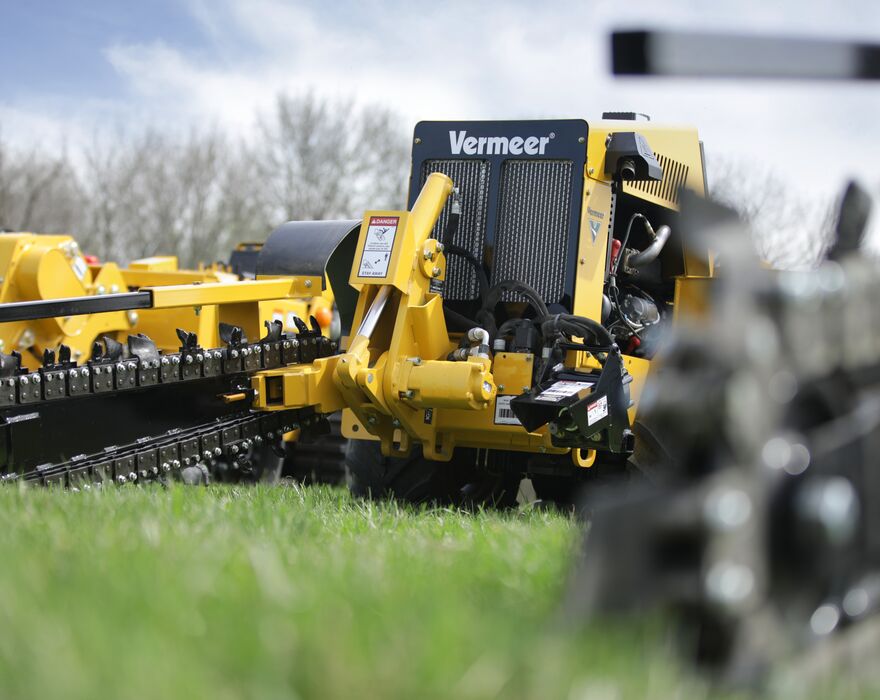Maintaining the wear parts of your trencher is crucial for maximizing productivity and allowing efficient operations. Neglecting these essential trencher parts can result in decreased efficiency and lost production, and compromise the quality of your crew’s work. Here is an overview of the common trencher and vibratory plow wear parts you should regularly inspect and replace to optimize productivity.
“There are many moving parts on a utility tractor trencher attachment that work together to cut and move material,” said Ed Savage, Vermeer product manager. “It is critical to pay attention to the condition of each component because excessive wear in one area can cause premature wear to another.”
Trencher teeth
Among the critical trencher wear parts are the cutting teeth. To allow consistent performance, it is crucial to regularly inspect the condition of your trencher’s cutting teeth and replace them when wear becomes noticeable.
- Inspect: Check the teeth each morning or before the start of every shift to check that they are in good condition. If excessive wear is observed, timely replacement is necessary to maintain optimal productivity.
- What happens if you wait: Ignoring wear on trencher teeth can have consequences beyond lost productivity. Overworking the machine can lead to performance issues, such as premature wear on the remaining teeth. Additionally, worn-out teeth can put additional strain on the hydraulic system and engine as the machine struggles to maintain productivity. This strain is particularly evident in cup cutters, as the loss of their cups prevents proper removal of spoil from the trench, resulting in “recut,” where the dirt is carried around instead of being efficiently removed.
- Savage’s advice: Select the appropriate cutting configuration for specific soil conditions to minimize excessive wear. When operating in sandy or abrasive soil, using carbide rotary teeth meant for harder conditions or rock can result in premature wear. Similarly, employing cup cutters or dirt teeth in tougher conditions or rocky terrain can quickly wear them down, hampering productivity.
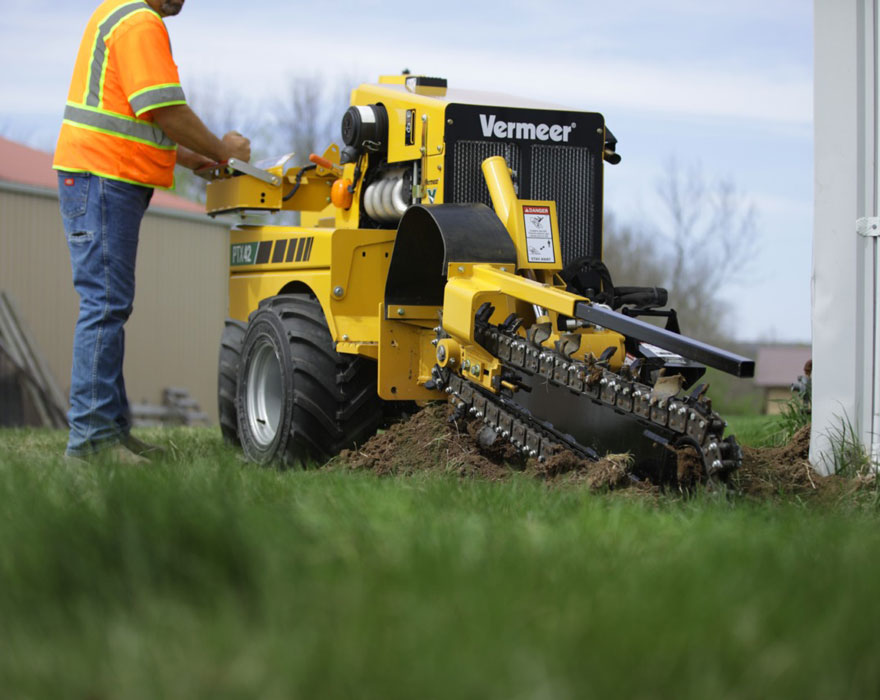
Trencher chain
The lifespan of a trencher chain varies depending on the ground conditions it operates in. Soils with abrasive characteristics, like a sandy loam mix, can accelerate chain wear. Therefore, precise hour specifications cannot be provided, underscoring the importance of ongoing assessments and timely replacements.
- Inspect: Pay close attention to the bushings between the side plates of the links. Excessive wear in these areas can indicate that the chain has neared the end of its lifespan or has been running too loose. Identifying such wear visually provides crucial cues for determining the need for chain replacement.
- What happens if you wait: Neglecting chain wear can result in broken chains or chain dislodgment, leading to lost production and potential damage to the trencher.
- Savage’s advice: Avoid running the chain too tight or too loose to help prevent adverse effects. Excessive chain tension can increase stress on the sprocket, drive sprocket, idler sprocket and end roller bearings. While a loose chain can cause continuous slapping against the boom, raising the risk of the chain rolling off the sprocket.
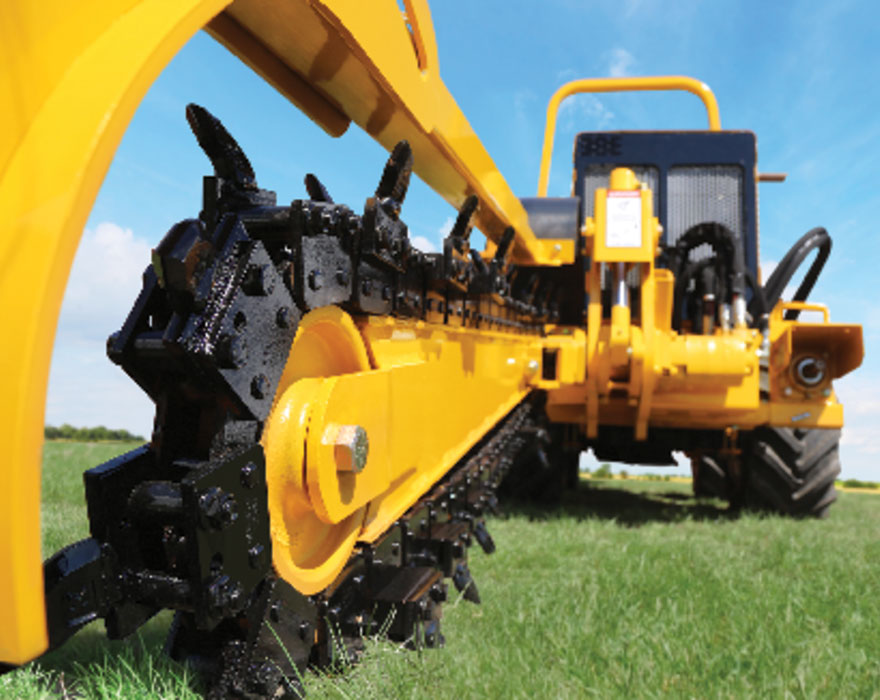
Sprockets
Regularly inspecting the drive and auger sprockets is crucial for maintaining optimal performance.
- Inspect: Look over the teeth of the different sprockets on the trencher cupping on one side.
- What happens if you wait: Timely replacement of cupped sprockets is necessary to help prevent further wear and allow proper alignment with a new chain.
- Savage’s advice: While replacing the chain, it is essential to assess the condition of the sprocket teeth. Running a new chain against worn sprockets can lead to premature wear on the chain due to misalignment. Additionally, adhering to the recommended greasing schedule outlined in the trencher’s operator’s manual is critical for preventing premature wear on sprockets. Proper lubrication enhances their lifespan and maintains optimal performance.
Vibratory plow attachments
The ability to swap out a trencher attachment with other attachments, like a vibratory plow, makes utility tractors versatile and productive machines. For many contractors installing fiber and electrical lines, a vibratory plow may be their primary function.
According to Savage, vibratory plows have fewer moving parts than trencher attachments. However, contractors must still be mindful of wear parts to optimize their performance.
“The blade of a vibratory plow will wear over time,” said Savage. “To extend its life, many contractors add hard-facing, which is an acceptable practice. They just need to make sure that over time, the blade doesn’t become too worn to operate efficiently.”
- Inspect: Paying attention to the toe and leading edge of the blade is vital, as these areas experience significant wear.
- What happens if you wait: Neglecting wear and continuing to use a worn blade leads to decreased productivity and challenges in maintaining the blade’s position in the ground. The trench cut may become thinner overall or lose its right edge, preventing the desired installation depth.
- Savage’s advice: In addition to keeping a watchful eye on the condition of the vibratory plow’s blade, contractors also need to make sure its size closely matches the required specifications to avoid over-cutting while putting product in the ground.
In addition to replacing the blade on a vibratory plow when it becomes worn, following the manufacturer’s recommended schedule for greasing allows smooth operation and prolongs the lifespan of the vibratory plow.
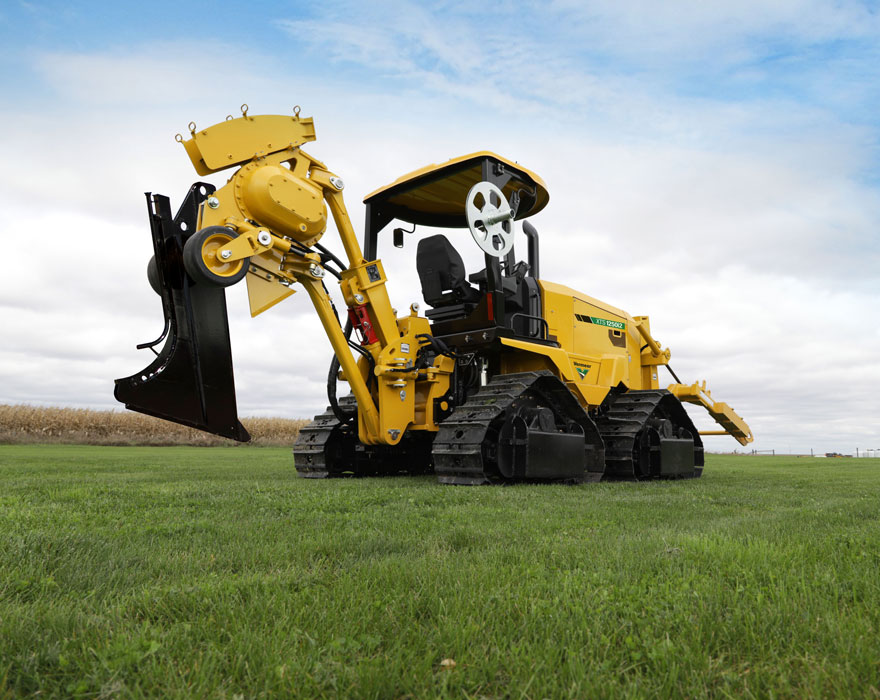
Utility tractor tracks/tires
When using ground-engaging attachments like trenchers and vibratory plows, it is important to care for the tires or tracks of the utility tractor for optimal traction.
- Inspect: Perform a daily machine walkaround to check for wear, cuts and gouges in the tractor’s tracks or tires.
- What happens if you wait: Waiting too long to address worn tracks or tires can hurt overall productivity due to poor surface traction.
- Savage’s advice: Regularly check and adjust track tension or tire pressure for optimal performance during trenching or plowing operations.
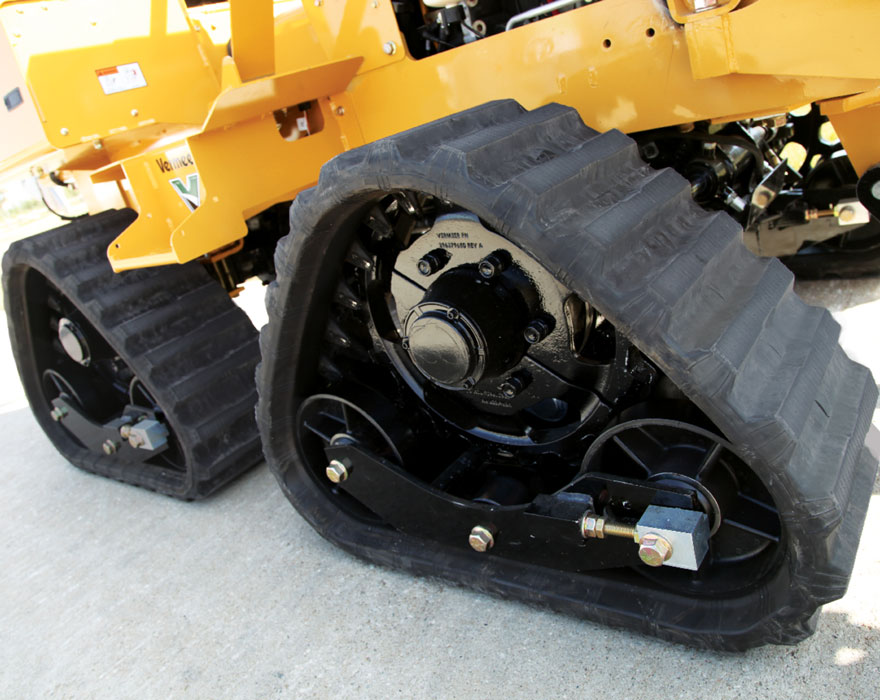
Why maintenance matters
Regular inspection and timely replacement of worn teeth, chains, sprockets and blades, along with adherence to maintenance schedules, allow optimal performance and work quality.
Contact your local Vermeer dealer for additional guidance and to secure wear parts for your utility trenchers and vibratory plows.
Vermeer Corporation reserves the right to make changes in engineering, design and specifications; add improvements; or discontinue manufacturing at any time without notice or obligation. Equipment shown is for illustrative purposes only and may display optional accessories or components specific to their global region. Please contact your local Vermeer dealer for more information on machine specifications.
Vermeer and the Vermeer logo are trademarks of Vermeer Manufacturing Company in the U.S. and/or other countries. © 2023 Vermeer Corporation. All Rights Reserved.
